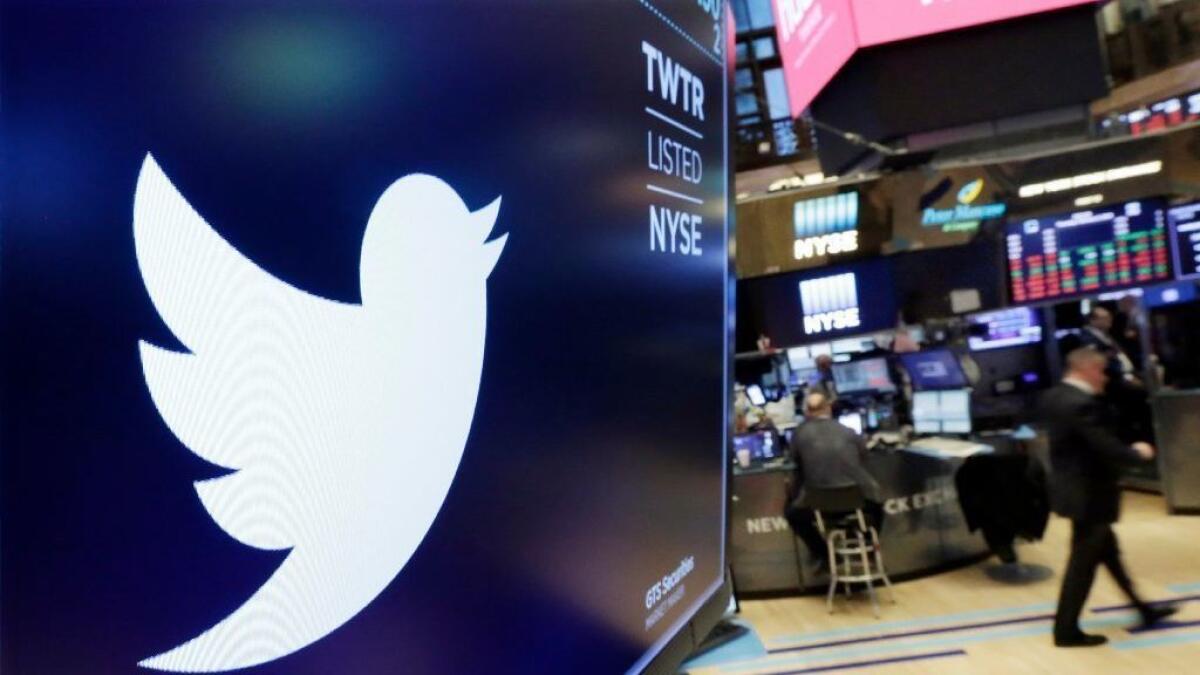5 stocks that are beating the market despite their own bumpy rides

Burritos, mascara and streaming.
Those are among the sectors where investors have reaped sizable gains with certain stocks not only so far this year but for the last 12 months, while the stock market overall has labored to bounce back to its record highs set last year.
The Standard & Poor’s 500 is up 9.2% so far this year after tumbling 6.2% last year, its biggest annual drop since 2008. The benchmark index is still down 6.6% from its record high set last Sept. 20.
Here’s a look at five stocks that have beat the market in the last year despite having their own bumps along the way:
Chipotle Mexican Grill Inc. (CMG)
This is a comeback story with investors betting that Brian Niccol, the former head of Taco Bell who took over as Chipotle’s chief executive last spring, can turn around the Newport Beach-based burrito chain.
Chipotle expanded quickly to 2,450 stores with its emphasis on fresh ingredients and fast service but went into a tailspin after highly publicized outbreaks of E. coli and other food-borne illnesses in late 2015.
After hitting a record high in mid-2015, the stock plummeted 67% until Niccol was hired, when it jumped 15% that day on hopes he could restore Chipotle’s sales growth and reputation among consumers.
So far it’s working, thanks partly to new menu items and a marketing blitz. Chipotle’s same-store sales in last year’s third quarter — those of stores open at least one year — jumped 4.4% from a year earlier.
The stock is up 22% so far this year and has soared 73% in the last 12 months, one of the biggest percentage gains of any stock in the S&P 500.
Ulta Beauty Inc. (ULTA)
Never mind that Ulta competes in a crowded sector that includes the likes of Sephora, Lush and — for the value minded — every corner drugstore. Ulta’s more than 1,100 stores — which offer an array of cosmetics, fragrances, skin-care products and salon services — are enjoying strong results.
The Bolingbrook, Ill., company’s sales more than doubled to $5.9 billion in 2017 from $2.7 billion in 2013, and analysts estimate they will have climbed to $6.7 billion for 2018 when Ulta reports its results Wednesday.
In addition, although Ulta’s online sales make up only 10% of its total sales, its e-commerce business soared 65% in 2017 and jumped an additional 43% in the first nine months of last year.
Ulta also enjoys a strong customer-rewards program, with sales from members of its loyalty program accounting for more than 90% of its overall revenue.
The result: Ulta’s stock has gained 20% so far this year and is up 34.5% for the last 12 months.
Netflix Inc. (NFLX)
One of the famed FANG stocks (Facebook Inc., Amazon Inc. and Google parent Alphabet Inc. are the others), Netflix is bouncing back from a drubbing in the second half of 2018, when the highflying technology sector led the overall market sharply lower.
Netflix is back up 33% so far this year and shows a gain of nearly 34% for the last 12 months, but recently it’s been volatile again as Netflix and rival streaming service Hulu announced price adjustments.
After Netflix said it was raising prices in U.S. markets by 13% to 18%, Hulu raised prices for some services. But Hulu also cut the price for its base, ad-supported subscription to $5.99 a month from $7.99 a month, raising fears that the move might draw business away from Netflix.
Wall Street also frets about Netflix’s continued growth rates and the company’s $8 billion in long-term debt. But Netflix’s paid memberships climbed 26% to 139.3 million in the fourth quarter, well above analysts’ estimates, and the company forecast they would keep rising to 148.2 million in this year’s first quarter.
The Los Gatos, Calif., company has been investing billions of dollars in original programs to attract viewers and compete with a growing roster of streaming competitors besides Hulu, including Amazon and Walt Disney Co., which will launch its own streaming service later this year.
Twitter Inc. (TWTR)
The character of its content remains controversial, and that, along with concern about Twitter’s user growth, keeps its stock volatile. A graph of Twitter’s price over the last two years resembles a roller-coaster ride.
The social media company’s stock is up nearly 20% this year. It’s also gained 36% in the last 12 months, but that’s mainly because the stock zoomed from $22 to nearly $46 in the first half of last year before plunging about 36% in the second half. It closed Tuesday at $34.37 a share.
The stocked dropped 4% on Jan. 23 alone after a pair of interviews with Twitter Chief Executive Jack Dorsey were published online in which Dorsey alluded to the difficulty of fixing the abuse, harassment and extremist views often found on Twitter.
Financially, Twitter has impressed of late. When it reported its most recent quarterly results, in October, the San Francisco company posted earnings and revenue that topped analysts’ estimates.
Twitter also said that although its number of monthly active users fell by 9 million from the prior quarter to 326 million, partly because Twitter purged fake or abusive accounts, the company saw a major jump in revenue from advertising to its remaining user base. Twitter is scheduled to release its full-year results Thursday.
Keysight Technologies Inc. (KEYS)
This Santa Rosa, Calif., company makes sophisticated electronics test and measurement equipment for the communications, automotive and aerospace industries, among others. That’s hardly glamorous stuff, but Keysight’s investors probably don’t mind.
The company’s stock is rallying again this year after soaring for most of 2018 until the stock pulled back with the rest of the market in the fourth quarter. Keysight has jumped nearly 22% this year and has soared nearly 68% over the last 12 months.
Keysight’s products are used in a variety of emerging technologies, including 5G mobile communications and the newest batteries for electric vehicles. The company also has made several acquisitions to expand its customer base.
In its fiscal year that ended Oct. 31, Keysight’s revenue rose 22% from a year earlier to $3.9 billion; earnings, after adjusting for one-time items, jumped 34% to $618 million.
Twitter: @PeltzLATimes







